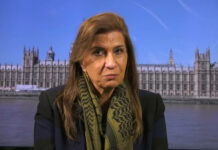 First came the bike lanes, creeping like overgrown ivy across the city streetscape.
First came the bike lanes, creeping like overgrown ivy across the city streetscape.
Then there were the open-air pedestrian plazas, sprouting from the concrete in hubs like Times Square and Union Square to make the insufferable clamor of crosstown traffic a little less so.
Now, by summer, New Yorkers may find themselves in the throes of the Bloomberg administration’s latest roadside intervention: between-avenue stop signs, speed humps and pedestrian crossings along six blocks in the heart of Midtown Manhattan, forging what some have dubbed Sixth-and-a-Half Avenue.
The Transportation Department plans to connect the public plazas and arcades that run from 51st to 57th Streets, between Sixth and Seventh Avenues, creating a quarter-mile walkway through open-access lobbies and canopied spaces between office buildings that offers refuge from the tumult of the city’s main arteries.
Though midblock pedestrian crossings do exist elsewhere in the city, most notably near Rockefeller Center, the proposed stretch is on track to become Midtown’s only extended thoroughfare governed by an authority more often found in the suburbs: the stop sign.
For years, the passageway, linked by a series of privately owned public spaces, has been an open secret among the area’s inhabitants, presenting perhaps the most tantalizing jaywalking opportunity in the city. Residents can finish off a lunchtime sirloin at the Capital Grille on West 51st Street, take in a movie at the Ziegfeld Theater three blocks north and retire to West 57th Street for drinks at the Russian Tea Room without ever setting foot on an avenue. Soon, it seems, they will be able to do so legally.
“A lot of people don’t know that these places exist, hidden within buildings,” said Janette Sadik-Khan, the transportation commissioner. “This is a kind of a secret pedestrian avenue that’s like Sixth-and-a-Half Avenue for pedestrians, and this would really energize these places with foot traffic.”
To critics, the proposal represents the latest in a string of domineering policies that do little but befuddle drivers and pedestrians and choke traffic flow. A stop sign, they say, will only exacerbate congestion across an already clogged section of Manhattan.
Perhaps a yield sign would make more sense, particularly since some plazas typically close around 7 p.m., said Senjay Meray, 40, who often makes deliveries to businesses in the area.
“In the night people don’t travel,” he said, sitting in a blue delivery van on Tuesday afternoon on West 53rd Street. “But cars do.”
The city says traffic disruptions would be negligible. An average of fewer than 10 vehicles traverse the blocks each minute during peak times, the Transportation Department said, while more than 1,000 pedestrians cross some of the streets connecting the plazas during a typical lunch hour.
On a recent weekday afternoon, most vehicles were forced to wait through at least one light as they crossed West 53rd Street, allowing many pedestrians to slither between stopped cars without a delay. For pedestrians who could not, options appeared to be threefold: jog to safety, timing the expedition from sidewalk to sidewalk; creep out, peeking around parked cars, and wait until no vehicles are in sight; or simply march forth without so much as a glance at the traffic, raising an open hand calmly at the taxi drivers who slam on their brakes near a plaza entrance.
Still, even supporters acknowledge that the proposal, prompted by a request last year from Community Board 5 to better use the spaces, is an audacious step.
“I just don’t know how motorists will react late at night,” said George Haikalis, a public member of the board’s transportation committee, which unanimously approved the proposal on Monday night. “It’s not going to be unnoticed. If the city D.O.T. wants to do it, then they’ll take the heat on that.”
The full community board will take up the proposal on April 12.
Some opponents have cited a tacit understanding among pedestrians and motorists familiar with the area’s layout, arguing that a stop sign would introduce chaos to a perfectly functional arrangement.
Joe Ward, 58, a technical writer who often eats lunch in the plaza near West 51st Street, disputed this logic. “People walk into oncoming traffic,” he said, discarding a cigarette outside his office building. “I haven’t seen any evidence of an unspoken bond.”
Shona Lewis, 25, understands the dangers well. During a recent southbound walk through the passageway, which she often takes from her advertising office to reach her gym, Ms. Lewis said she was nearly struck by a taxi – its driver perhaps emboldened by his legal right of way.
“He clearly saw me coming and was going faster,” she recalled. “I slammed on the hood – New York style.”
Stella Billings, 29, from the Bronx, said she typically got off the No. 1 train a stop early, at Columbus Circle, so she could walk to the office of her nonprofit organization using the public spaces between avenues.
She lauded how pedestrian-friendly the city had become in recent years. “It’s such a businessy area,” she said. “This is like an oasis.”
The prospect of an avenue name involving fractions was equally appealing. “That’s cute,” Ms. Billings said. “Very Harry Potter.”
But on transit boldness alone, the Bloomberg administration is unlikely to match at least one predecessor: Mayor William J. Gaynor, who in 1910 proposed a new avenue between Fifth and Sixth Avenues, extending from Eighth Street to 59th Street and splitting Bryant Park in two. Numerous buildings would have been sacrificed to Mayor Gaynor’s vision.
“It was a crazy proposal,” said Andrea Renner, an assistant curator for the Museum of the City of New York’s exhibit on the history of the Manhattan grid.
Months after introducing this plan, Mayor Gaynor was weakened by an assassination attempt, robbing the plan of any momentum, Ms. Renner said.
Bike lanes were never discussed.
{NY Times/Matzav.com Newscenter}











